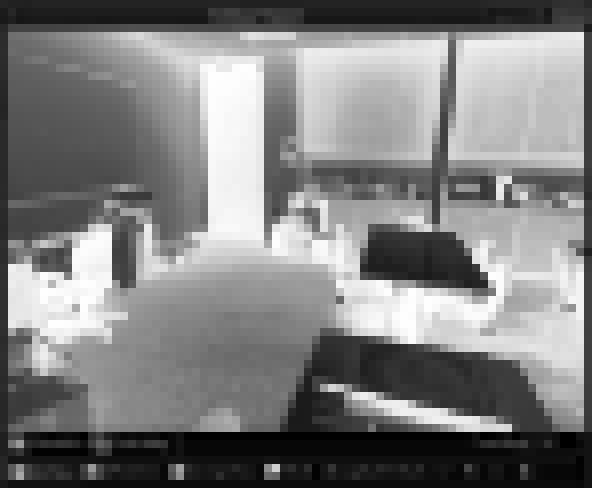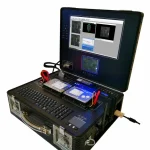In the age of ubiquitous digital media — CCTV footage, smartphone videos, drone imagery, and AI-generated visuals — the need for trusted, court-ready forensic processing has never been greater. In this article, we dive into two foundational disciplines: forensic video analysis and forensic image authentication, examining their purpose, methods, challenges, and best practices. Drawing on the expertise of a pioneer in the field, Cognitech, Inc. (Cognitech) — which offers software solutions for both video enhancement and image authentication.
This article is written for beginners and professionals alike who seek a deeper understanding of how video and image evidence is treated in forensic workflows.
What Is Forensic Video Analysis?
Forensic video analysis (FVA) refers to the systematic process of examining, enhancing, interpreting, and presenting video evidence so that it is suitable for investigation, intelligence-gathering, or courtroom presentation. Key goals include:
- Enhancing clarity (improving problematic footage)
- Extracting meaningful content (persons, vehicles, actions)
- Measuring dimensions, trajectories or motion when required
- Ensuring chain of custody, authenticity and reliability
For example, Cognitech’s TriSuite64 software suite offers a specialized “Forensic Video Analysis Software” environment designed for processing video or image evidence — including deblurring, denoising, super-resolution.
Main steps in forensic video analysis
Here are common steps in an FVA workflow:
- Acquisition and verification – Secure the raw video, document metadata, ensure integrity (no overwrites, tampering).
- Pre-processing – Stabilize, correct lens distortions, convert formats, ensure temporal alignment.
- Enhancement – Deblur, denoise, improve resolution, improve contrast/lighting. For example, Cognitech describes “Adaptive Deblur” and “FrameFusion®” features.
- Extraction and measurement – Identify objects (faces, license-plates, vehicles), perform biometric or dimensional measurements (e.g., height, shoulder width) as supported in their AutoMeasure module.
- Interpretation and annotation – Annotate findings, track subject movement, map multi-camera scenarios.
- Report generation and presentation – Produce court-ready deliverables, document methods, provide expert testimony if needed.
Why it matters
Video evidence often arrives in poor condition: low resolution, blur, noise, complex lighting, varying formats. Without enhancement and proper processing, critical details might be missed. For law enforcement, intelligence agencies, or civil litigation, having tools and methods that are scientifically valid and court-admissible makes a difference. Cognitech underscores the fact that its TriSuite has been “Court Approved” since 1992.
What Is Forensic Image Authentication?
Forensic image authentication deals with determining whether a digital image (or a frame from video) is genuine, as captured and stored, or whether it has been altered, manipulated or fabricated. With deep-fakes, AI-generated imagery and easy photo editing, this branch is increasingly important.
Cognitech’s offering, “Forensic Image Authentication 64 (FiA64)”, is described as a comprehensive set of 33 analysis tools designed for detecting traces of tampering or inconsistencies in digital images, and generating “court ready reports.”
Key tasks in image authentication
Some of the core tasks include:
- Metadata analysis – Reviewing EXIF data, timestamps, camera model, editing history.
- Sensor pattern noise & demosaicing trace analysis – Verifying that the image originates from a known sensor without heavy editing.
- Clone detection – Identifying duplicated regions within the image (indicative of tampering). Cognitech mentions “New Clone Detection” in its latest release.
- Resampling / re-compression detection – Detecting if the image has been resaved, compressed, or had parts manipulated.
- Contextual inconsistencies – Shadows, reflections, perspective errors, lighting mismatches, unnatural geometry.
- Layer or hidden data analysis – Checking for hidden channels, embedded thumbnails, manipulation artifacts.
- Report generation – Documenting findings in a defensible format for litigation or investigation.
Why it matters
In many investigations, the authenticity of a digital image is just as important as what the image shows. If an image is found to be manipulated, its evidentiary value can collapse. With AI generation, deep-fakes and increasingly sophisticated editing tools, the role of image authentication becomes critical in preserving justice and truth.

Integrating Video Analysis & Image Authentication
Although distinct disciplines, forensic video analysis and image authentication increasingly overlap. Consider these scenarios:
- A video clip from surveillance is used to capture an incident. A still-frame is extracted and enhanced (video analysis) and then checked for tampering (image authentication).
- A photo captured from a drone is enhanced to reveal license-plate details (video/image enhancement) and then the image is run through authentication to rule out AI-generated or edited content.
- In multi-camera setups, temporal synchronisation, geo-registration, and cross-camera tracking require both enhancement and authentication to ensure the entire timeline and imagery are credible.
Tools like Cognitech’s TriSuite64 bundle, and FiA64, reflect this convergence: enabling both enhancement (video/image) and authentication in the same workflow.
Challenges & Best Practices
Common challenges
- Poor source quality – Low resolution, high noise, unknown codec/formats, missing metadata.
- Compression & artifacts – Video and images that have been heavily compressed may lose essential forensic detail.
- Format diversity – From smartphone HEVC/HEIF to legacy CCTV formats, multiple formats complicate workflows. Cognitech notes support for HEVC/HEIF in the latest release.
- Chain of custody and provenance – Without clear documentation of how files were captured, stored or transferred, authenticity is suspect.
- Deep-fakes and advanced editing – Making tampering harder to detect.
- Legal admissibility – Tools and methods must stand up to scrutiny in court (validity, repeatability, peer review). Cognitech emphasizes its algorithms are peer-reviewed and court-approved.
Recommended best practices
- Secure acquisition – Capture raw footage/images where possible; preserve metadata; document capture conditions.
- Use validated tools – Use software proven in peer review and legal contexts.
- Document every step – From acquisition through enhancement/authentication to reporting, maintain a log to support reproducibility.
- Avoid alteration of source – Work on copies; preserve originals.
- Enhancement with caution – Any enhancement must be justified, documented, and traceable, especially when to be presented in court.
- Authentication early – Don’t assume imagery is legitimate; run authentication checks early in your workflow.
- Maintain training and expertise – Technology evolves fast; analysts should keep up-to-date with the latest methods and threats (e.g., AI-generated content).
- Report clearly and unbiasedly – Reports must be understandable to non-technical stakeholders (lawyers, juries), and must clearly state limitations, assumptions, and method details.
Emerging Trends & Future Outlook
- AI and machine learning-based enhancement – Increasingly software (like Cognitech Intelligence) is using AI to perform super-resolution, face recognition, scene reconstruction.
- Cloud-based forensic workflows – Remote/cloud access to tools, collaborative workflows, scalable processing. Cognitech advertises “My Cognitech Cloud” for global access.
- Deep-fake detection and AI-generated imagery authentication – As generative AI improves, tools to detect manipulated visuals must keep pace. Cognitech mentions image authentication for “AI-Generated Images”.
- 3D photogrammetry and scene reconstruction – Linking multiple vantage points, videos and point-clouds for accurate scene measurement. Cognitech’s AutoMeasure and 3D tools support this.
- Standardisation and accreditation – Forensic standards bodies increasingly expect validated methods, audit trails, and standardised reporting formats in court.
Why Organisations Should Care
For law-enforcement, intelligence agencies, corporate security teams, legal firms and private investigators, investing in forensic video analysis and forensic image authentication means:
- Stronger evidence – Better clarity, more reliable visuals, fact-based interpretation.
- Risk mitigation – Reduced chance of presenting inadmissible or manipulated evidence.
- Efficiency – Modern tools speed up investigation workflows.
- Credibility – When a method is documented, validated and repeatable, the expert’s credibility strengthens.
With companies like Cognitech providing engineered software that has been court-approved and peer reviewed, organisations can align with trusted providers.
Conclusion
In a world overflowing with video and image content — much of it poor quality, heavily compressed, or potentially manipulated — the disciplines of forensic video analysis and forensic image authentication are essential. They enable investigators, analysts, and legal professionals to extract meaningful insights, validate authenticity, and present evidence confidently. By adhering to best practices, using validated tools, documenting every step, and staying current with emerging threats (like AI-generated content), organisations can elevate the reliability of their visual evidence.






